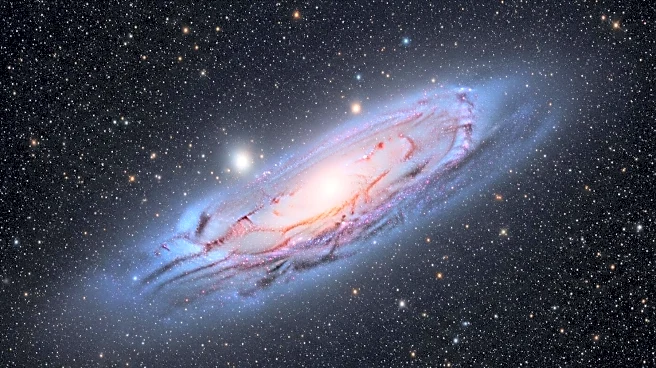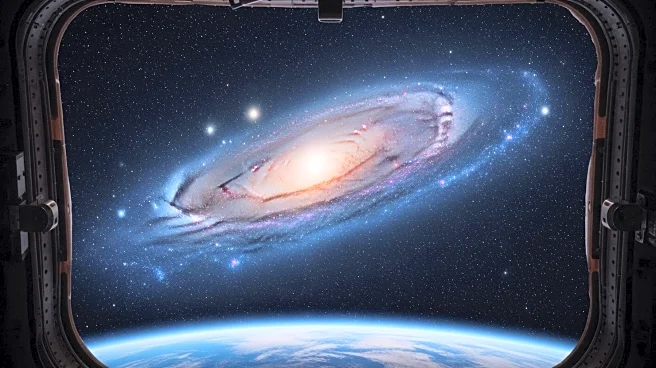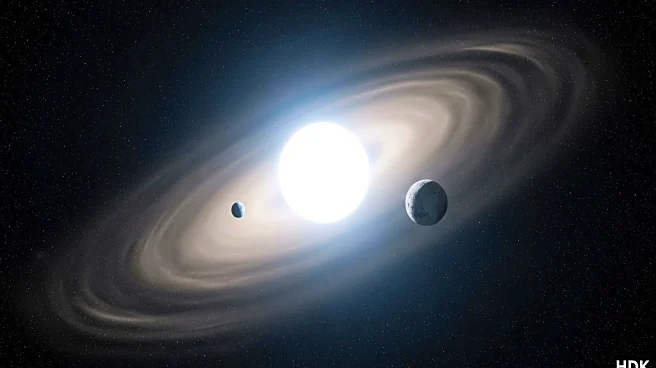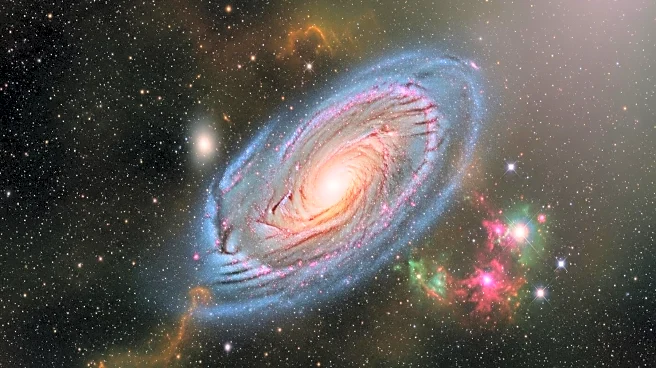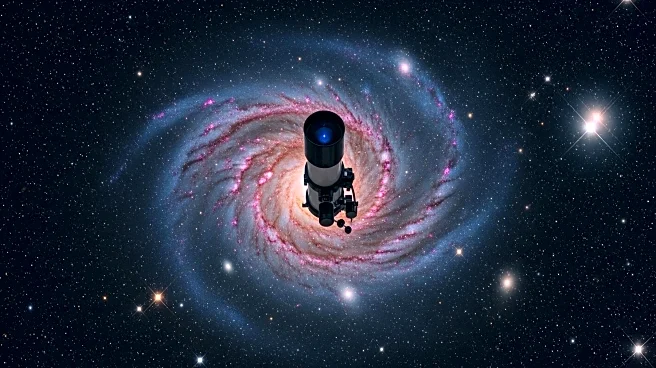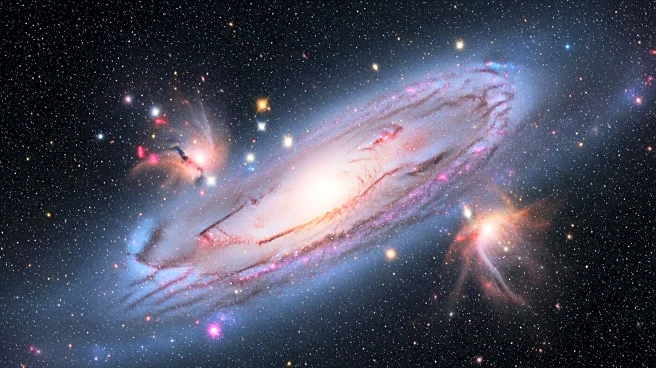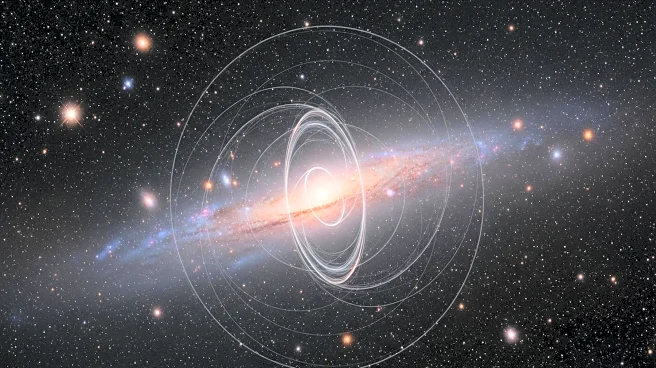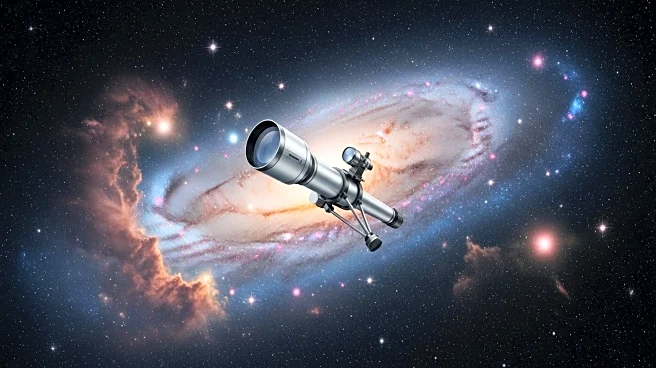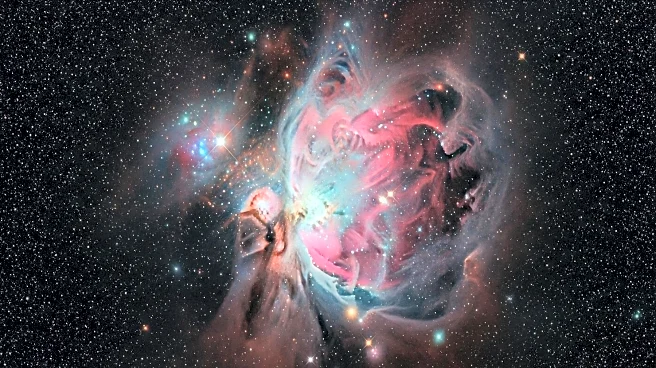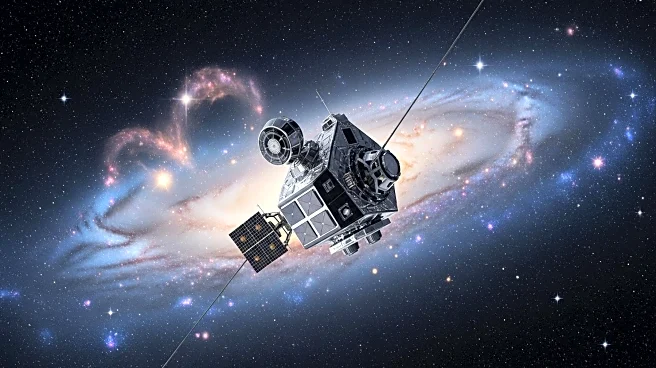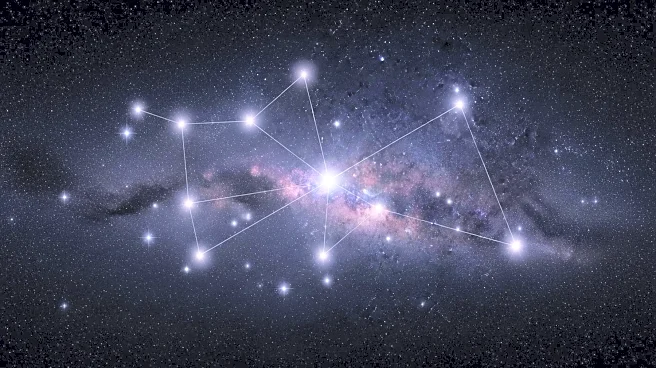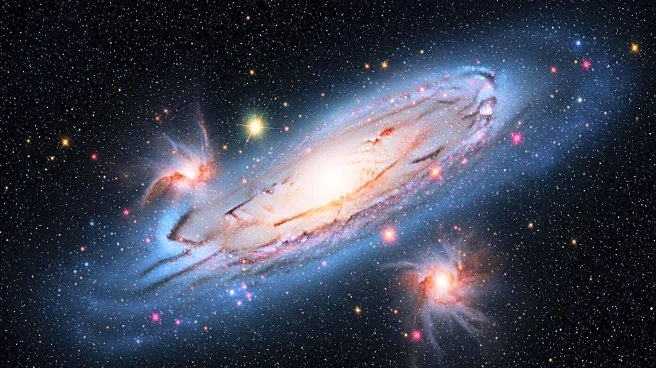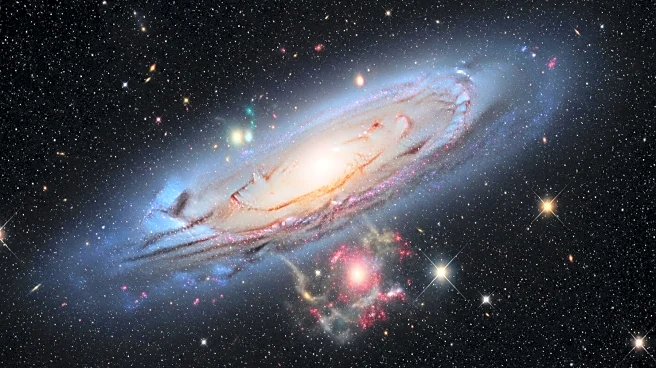What is the story about?
What's Happening?
The Hubble Space Telescope has released a new image of the spiral galaxy Messier 96, located 35 million light-years away in the constellation Leo. This galaxy is noted for its asymmetric appearance, which may be the result of gravitational interactions with neighboring galaxies. The image, incorporating ultraviolet and optical light observations, reveals uneven distribution of gas and dust, asymmetric spiral arms, and an off-center galactic core. These features are believed to be influenced by the gravitational pull from nearby galaxies, creating a galactic tug of war. The new data will aid in studying star formation within giant dusty gas clouds and how stars impact their environments.
Why It's Important?
The study of Messier 96 provides valuable insights into the dynamics of galaxy formation and evolution. Understanding the gravitational interactions between galaxies can help astronomers predict future changes in galactic structures and star formation processes. This research contributes to the broader field of astrophysics by enhancing knowledge of how galaxies develop and interact over time. The findings may also inform models of cosmic evolution, offering clues about the history and future of our own galaxy, the Milky Way.
What's Next?
Further analysis of the data collected by the Hubble Space Telescope will continue to refine our understanding of Messier 96 and similar galaxies. Astronomers may conduct additional observations to explore the effects of gravitational interactions on star formation and galactic structure. These studies could lead to new discoveries about the lifecycle of galaxies and the role of dark matter in shaping cosmic environments.
AI Generated Content
Do you find this article useful?
